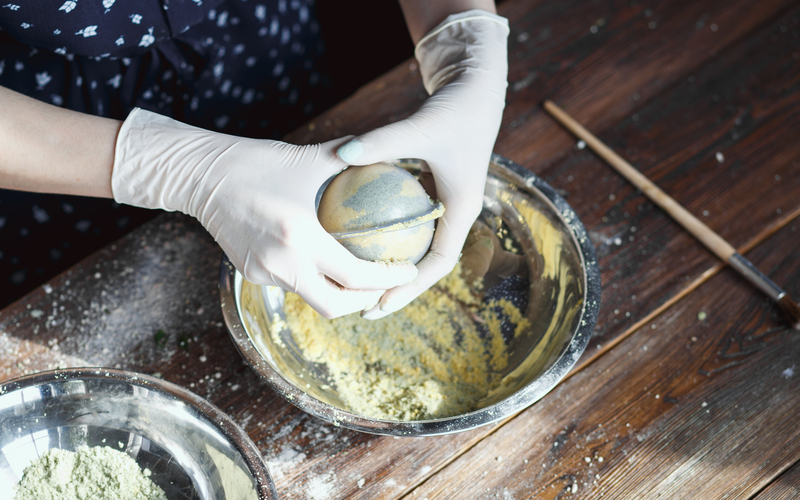Tips and Tricks for Eradicating Mould from Window Sills
Posted on 27/06/2025
Tips and Tricks for Eradicating Mould from Window Sills
Mould infestation on window sills is a common concern for many homeowners. Not only does mould look unsightly, but it can also impact the air quality and health in your home. If mould is left untreated, it can damage window structures and spread rapidly to other areas. Fortunately, with the right approach and proactive prevention strategies, you can keep mould at bay. In this comprehensive article, we'll cover the best tips and tricks for eradicating mould from window sills, delve into causes and prevention, and provide a step-by-step cleaning guide for lasting results.

Understanding Why Mould Forms on Window Sills
Before addressing mould removal techniques, it's essential to understand why window sills become breeding grounds for mould. Mould thrives in environments with the following features:
- High humidity levels
- Poor ventilation or stagnant air
- Condensation buildup on windows
- Organic material like wood or dust, which provides food for mould
- Leaky windows letting water seep in
The edges and corners of window frames, especially in older homes or poorly insulated properties, are more susceptible to these conditions. Preventing moisture accumulation is the first step toward winning the battle against mould.
Early Signs That You Have Mould on Your Window Sills
You should regularly inspect your window sills for early signs of mould. By catching it early, you can prevent costly damage and potential health issues. Common indicators of mould infestation on window sills include:
- Dark or black spots forming on the paint or caulking
- Musty or earthy odours near the window
- Peeling paint or discoloration
- Dampness or persistent condensation on the glass or sill
If you notice these symptoms on your window frames, act quickly to stop mould from spreading further.
The Health Risks of Mould on Window Sills
Window sill mould is not just an aesthetic problem--it poses several health risks, especially for sensitive groups. Common health concerns associated with indoor mould include:
- Allergic reactions like sneezing, runny nose, and itchy eyes
- Respiratory problems such as coughing, wheezing, or asthma flare-ups
- Headaches and fatigue
- Complications for those with existing respiratory issues or weakened immune systems
Long-term mould exposure can be particularly problematic for children, the elderly, and those with chronic lung conditions. That's why it's crucial to address mould growth as soon as you spot it.
How to Eradicate Mould from Window Sills: Step-by-Step Guide
Ready to tackle that stubborn window mould? Follow these step-by-step instructions for effective removal of mould from window sills:
1. Gather Your Cleaning Supplies
- Personal protective equipment (gloves, mask, safety goggles)
- Soft brush or old toothbrush
- Non-abrasive sponge or cloth
- Spray bottle
- Cleaning solution: white vinegar, hydrogen peroxide, diluted bleach, or commercial mould remover
- Bucket of warm water
- Paper towels or disposable cloths
2. Prepare the Area
- Open windows for proper ventilation
- Lay down old towels or newspaper to catch drips
- Avoid using a vacuum directly on mould, as it can disperse spores into the air
3. Remove Surface Mould
- Mix your chosen cleaning solution. For bleach, use a 1:10 ratio with water. Hydrogen peroxide or white vinegar can be used undiluted.
- Spray the solution directly onto the affected area.
- Let the solution sit for 10-15 minutes to break down the mould.
- Use your soft brush or toothbrush to gently scrub away the mould.
- Wipe with a damp cloth to remove residue.
*Never mix cleaning solutions. For example, do not combine bleach and vinegar, as this can produce toxic fumes.*
4. Rinse and Dry Thoroughly
- Rinse the window sill with clean water to remove any remaining cleaning solution.
- Wipe the area with a dry cloth until completely dry.
- If weather allows, leave windows open to help facilitate drying.
Drying is essential: Mould loves moisture, so ensuring the area is dry is key to preventing regrowth.
5. Check and Replace Any Damaged Materials
- If you notice cracked caulking or rotting wood, remove and replace the damaged material.
- In severe cases, you may need to sand down and repaint wooden window sills with mould-resistant paint.
Natural and Chemical Solutions for Mould on Window Frames
There are various remedies for window mould, depending on your cleaning preferences and the severity of the problem:
Natural Mould Removal Solutions
- White Vinegar: Fights up to 82% of mould species. Spray undiluted vinegar, let sit, then scrub and rinse.
- Baking Soda: Dissolve in water to make a paste. Apply, scrub gently, and rinse.
- Hydrogen Peroxide (3%): Kills bacteria and mould effectively. Spray, let sit, scrub, and wipe clean.
- Tea Tree Oil Solution: Mix 1 tablespoon per cup of water in a spray bottle. Spray and leave to dry.
Chemical Mould Removal Products
- Bleach: Very effective but harsh--should be used with care and only in well-ventilated spaces.
- Commercial mould removers: Follow the manufacturer's instructions for safe and effective use.
Note: While natural products are more eco-friendly and safer for families and pets, chemical solutions may be necessary for severe mould infestations.
How to Prevent Mould from Returning to Window Sills
Once you've successfully removed mould from your window sills, the most important step is prevention. Follow these essential tips to keep your window frames and sills mould-free:
- Reduce indoor humidity: Use dehumidifiers, especially in damp areas, and monitor with a humidity gauge. Aim for 40-60% relative humidity.
- Increase ventilation: Open windows regularly and use extractor fans in kitchens and bathrooms.
- Wipe condensation: Regularly remove condensation from glass and sills, particularly during cold weather.
- Keep window sills clean: Dust and wipe sills weekly to remove organic matter.
- Repair leaks promptly: Fix leaky windows, roofs, or gutters to stop water ingress.
- Re-caulk windows: Replace old, cracked caulking to seal out moisture.
- Upgrade to double glazing: Reduces condensation compared to single-pane windows.
- Trim outdoor plants: Make sure shrubs or trees near windows are trimmed and not blocking airflow.
- Apply anti-mould paint: Paints designed to inhibit mould growth add extra protection in problem areas.
Regular maintenance combined with improved airflow and moisture control will significantly decrease the chance of mould returning to your window frames.
What to Do If Mould Keeps Coming Back
Almost everyone faces the frustration of recurrent mould at some point--especially in older, draughty houses or in climates with high humidity. If you find that all your cleaning and preventative efforts aren't enough, try:
- Inspecting for hidden leaks: Sometimes water is entering through walls, sills, or window joints rather than the surface.
- Checking exterior conditions: Ensure gutters and downspouts are directing water away from your home's foundation.
- Consulting a professional: If the problem is persistent and extensive, consider hiring a mould remediation specialist. They have specialized equipment to detect and safely remove hidden or large-scale mould infestations.
- Reviewing your insulation: Upgrading insulation helps reduce condensation and surface temperature differentials, which encourage mould growth.
Even with the best cleaning strategies, sometimes ongoing changes to home structure and maintenance are required for full and permanent eradication.

When Should You Seek Professional Mould Remediation Services?
While most surface mould on window sills can be handled with DIY methods, there are cases when professional mould removal is the safest and most effective option. Seek help from a certified mould remediation company if you notice:
- Mould covering more than 1 square meter (10 square feet)
- Mould appears inside the wall cavity or insulation
- Severe allergic or respiratory reactions occur in your household
- Repeated mould growth despite thorough cleaning
- The source of moisture is not obvious or hard to fix
Professionals have protective equipment and industrial-grade cleaners to ensure complete and safe removal--even from hard-to-reach areas. In severe cases, they may recommend replacing window sills, frames, or wall sections.
Conclusion: Keep Your Window Sills Mould-Free
Eradicating window sill mould is an essential part of home maintenance. Quick action not only preserves the beauty of your windows but also ensures a healthier indoor environment. By identifying the root cause, following our detailed removal guide, and implementing diligent prevention strategies, you can banish mould from your window sills for good.
Remember: The key is to tackle mould early, address moisture problems at their source, and maintain a clean, well-ventilated living space. Whether you prefer natural solutions or need the strength of chemical products, our expert tips and tricks for removing mould from window frames and sills will help you reclaim your home from this persistent enemy.
For ongoing peace of mind, consider adding a reminder to check your window sills for mould every season--especially after periods of heavy rain or high humidity. With vigilance and regular care, your home can remain safe, healthy, and totally mould-free!





